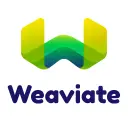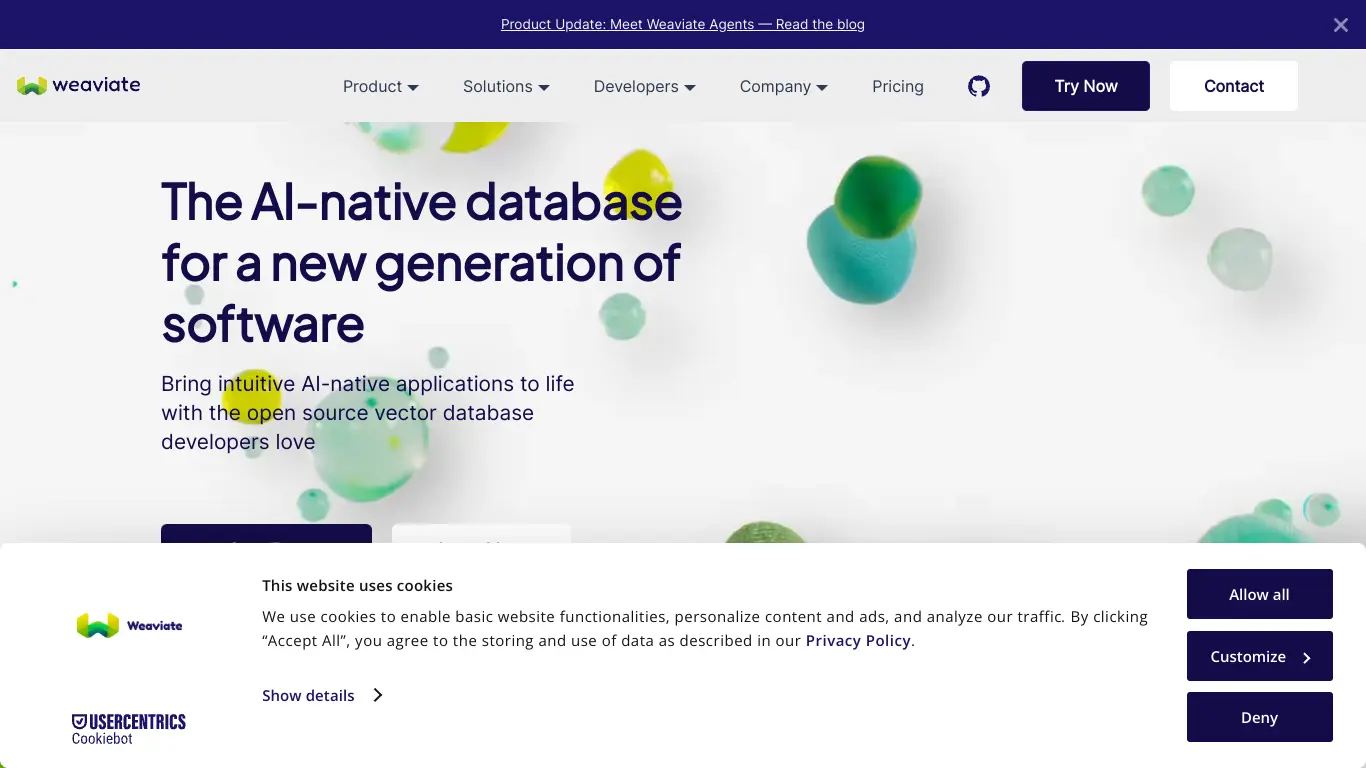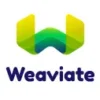Weaviate is an open-source vector database that bridges traditional data storage with AI capabilities for powerful semantic search and data retrieval.
Introduction to Weaviate
Are you struggling to find an efficient way to organize, search, and analyze your unstructured data? Traditional databases fall short when dealing with complex semantic search requirements or vector-based data storage. This is where Weaviate steps in—revolutionizing how we interact with and derive value from our data.
What is Weaviate and its Purpose?
Weaviate is an open-source vector database designed to store both objects and vectors, making it easier to combine structured data with machine learning models. At its core, Weaviate is built to handle vector search operations, enabling semantic search capabilities that understand the context and meaning behind queries rather than just matching keywords.
Unlike traditional databases, Weaviate specializes in vector similarity searches, allowing developers and data scientists to find information based on its semantic meaning. This powerful tool bridges the gap between traditional data storage and modern AI capabilities by providing a scalable, production-ready vector search engine.
Weaviate’s primary purpose is to make vector search accessible and efficient for applications that require semantic search, similarity matching, and AI-powered data retrieval. It serves as the crucial infrastructure layer that powers next-generation search and recommendation systems.
Who is Weaviate Designed For?
Weaviate caters to a diverse audience of technical professionals:
- AI Engineers and ML Practitioners: Those building models that require efficient vector storage and retrieval
- Data Scientists: Professionals working with large datasets who need semantic search capabilities
- Software Developers: Engineers building applications that require advanced search functionality
- Enterprise Solutions Architects: Teams designing knowledge management systems and information retrieval pipelines
- Researchers: Academics exploring vector embeddings and information retrieval techniques
The platform particularly shines for teams working on applications involving natural language processing, image recognition, recommendation systems, and any use case requiring semantic understanding of data.
Getting Started with Weaviate: How to Use It
Getting started with Weaviate is straightforward, especially for those with some development experience. Here’s a simplified process:
- Installation: Weaviate can be deployed through Docker, Kubernetes, or various cloud providers.
docker-compose up -d
- Schema Definition: Define your data schema to organize your objects and their properties.
class_obj = {
"class": "Article",
"vectorizer": "text2vec-openai",
"properties": [
{
"name": "title",
"dataType": ["text"]
},
{
"name": "content",
"dataType": ["text"]
}
]
}
- Data Import: Add your data to Weaviate, which will automatically convert text to vectors.
data_object = {
"title": "Vector databases explained",
"content": "A comprehensive guide to understanding vector databases..."
}
client.data_object.create(data_object, "Article")
- Query: Perform semantic searches using natural language.
results = (
client.query
.get("Article", ["title", "content"])
.with_near_text({"concepts": ["vector search benefits"]})
.do()
)
For those new to vector databases, Weaviate provides comprehensive documentation, tutorials, and a supportive community to help overcome any learning curve.
Weaviate’s Key Features and Benefits
Core Functionalities of Weaviate
Weaviate stands out with its impressive array of functionalities designed specifically for vector-based data operations:
🔍 Vector Search: At its heart, Weaviate excels at performing fast similarity searches across vector spaces, allowing you to find content based on meaning rather than exact matches.
🔄 Multiple Vectorizers: Weaviate supports various vectorization modules including:
- text2vec-openai (for OpenAI embeddings)
- text2vec-huggingface (for open-source models)
- text2vec-cohere (for Cohere embeddings)
- multi2vec-clip (for multimedia vectorization)
📋 RESTful API and GraphQL Interface: Access your data through intuitive APIs that support complex queries and filters.
🔗 Hybrid Search: Combine traditional keyword search with vector search for more precise results.
📊 Automatic Schema Inference: Weaviate can automatically generate data schemas based on your inputs.
⚡ HNSW Algorithm: Uses Hierarchical Navigable Small World algorithm for efficient high-dimensional vector searches.
🛡️ Authentication & Authorization: Built-in security features to protect your data.
Advantages of Using Weaviate
The benefits of implementing Weaviate in your data infrastructure include:
- Semantic Understanding: Weaviate understands context and meaning, delivering more relevant search results than keyword-based systems.
- Speed and Scalability: Designed to handle billions of objects efficiently with low query latency.
- Flexibility: Works with many different AI models and can store any data type that can be vectorized.
- Open-Source Foundation: Being open-source means transparent development and the ability to customize for specific needs.
- Modern Architecture: Built with a cloud-native approach, making it suitable for containerized environments.
- Active Development: Continuously improved with regular updates and new features.
| Benefit | Description |
|---|---|
| Performance | Millisecond query responses even with large datasets |
| Accuracy | Contextual understanding leads to more relevant results |
| Integration | Works seamlessly with modern AI/ML pipelines |
| Ownership | Keep full control of your data and models |
| Community | Access to a growing community of developers and users |
Main Use Cases and Applications
Weaviate shines in numerous real-world applications:
- Enhanced Search Experiences: Build search engines that understand user intent rather than just matching keywords.
- Recommendation Systems: Create personalized content or product recommendations based on semantic similarity.
- Knowledge Management: Organize and retrieve information from large document repositories based on meaning.
- Question Answering Systems: Power Q&A platforms that can understand and respond to natural language questions.
- Image and Video Search: Find visual content based on similarity or descriptions rather than just tags.
- Anomaly Detection: Identify outliers in data that don’t match expected patterns.
- E-commerce: Improve product discovery by understanding what customers are actually looking for.
- Research and Analysis: Help researchers find relevant information across large datasets quickly.
Many companies have implemented Weaviate to transform their data retrieval systems, resulting in more intuitive user experiences and more efficient information discovery.
Exploring Weaviate’s Platform and Interface
User Interface and User Experience
Weaviate primarily serves as a backend technology, but it offers multiple interfaces for interaction:
Console Interface: Weaviate provides a simple admin console for monitoring and basic operations, though it’s not the primary way most users interact with the system.
GraphQL Interface: The main interface for querying data in Weaviate is GraphQL, which offers:
- Intuitive query structure
- Strong typing
- Precise control over what data is returned
- Support for complex filters and operations
RESTful API: For those who prefer REST, Weaviate offers a comprehensive RESTful API that covers all functionality.
Client Libraries: Weaviate provides official client libraries for:
- Python
- JavaScript/TypeScript
- Go
- Java
The user experience reflects Weaviate’s developer-focused nature. While there isn’t a flashy GUI for end-users, the developer experience is streamlined with clear documentation, intuitive APIs, and helpful error messages. The learning curve is moderate—technical users will find the concepts familiar, but those new to vector databases may need time to understand the underlying principles.
Platform Accessibility
Weaviate is designed with accessibility and flexibility in mind:
Deployment Options:
- Self-hosted with Docker or Kubernetes
- Cloud deployment on AWS, GCP, or Azure
- Weaviate Cloud Services (managed offering)
Operating System Compatibility:
- Linux
- macOS
- Windows (via Docker)
Hardware Requirements:
Resource requirements scale with data volume and query complexity, but Weaviate is designed to be efficient. For production environments, SSD storage is recommended for optimal performance.
Documentation and Learning Resources:
Weaviate excels in this area with:
- Comprehensive documentation
- Interactive tutorials
- Code examples for common use cases
- YouTube tutorials and webinars
- Community discussions and support
The platform prioritizes developer experience with clear error messages, extensive logging options, and responsive community support channels. While Weaviate requires technical knowledge to implement effectively, the team has worked to make the technology as accessible as possible to those with software development or data science backgrounds.
Weaviate Pricing and Plans
Subscription Options
Weaviate offers flexible pricing options to suit various needs and scales:

For exact pricing details, it’s best to consult Weaviate’s website as their pricing structure evolves based on market conditions and new offerings.
Weaviate Reviews and User Feedback
Pros and Cons of Weaviate
Based on user feedback and industry analysis, here’s how Weaviate measures up:
Pros:
- ⭐ Outstanding performance for vector search operations
- ⭐ Flexible integration with various AI models and embeddings
- ⭐ Strong open-source foundation with active development
- ⭐ Excellent documentation and learning resources
- ⭐ Scales effectively for large datasets
- ⭐ Hybrid search capabilities provide best-of-both-worlds approach
- ⭐ Active and helpful community
Cons:
- ⚠️ Steeper learning curve for those new to vector databases
- ⚠️ Requires technical expertise to implement effectively
- ⚠️ Resource-intensive for very large deployments
- ⚠️ Some advanced features require careful configuration
- ⚠️ Cloud service pricing can scale quickly with large datasets
User Testimonials and Opinions
The technology community has generally responded positively to Weaviate. Here are some representative opinions from users:
“Weaviate transformed how we handle our document search. The semantic understanding is leagues beyond our previous keyword search system.” – Data Engineer at a Fortune 500 company
“The learning curve was worth it. Once we understood the vector concepts, implementation was straightforward, and the performance has been remarkable.” – ML Engineer at a tech startup
“We evaluated several vector databases, and Weaviate stood out for its balance of performance and features. The GraphQL interface is particularly elegant.” – Senior Software Developer
“Documentation is top-notch, which made a huge difference during implementation. Still, I wish there was a simpler GUI for non-technical team members.” – Solution Architect
According to GitHub and community forums, users particularly appreciate:
- The performance improvements over traditional search methods
- The flexibility to work with different embedding models
- The responsive community support
- Regular feature updates and improvements
Common criticisms include:
- Initial setup complexity
- Resource requirements for larger datasets
- Need for more intuitive visualization tools
Overall, the sentiment is predominantly positive, with most criticisms focused on aspects that are being actively addressed in ongoing development.
Weaviate Company and Background Information
About the Company Behind Weaviate
Weaviate is developed by SeMI Technologies, a company dedicated to creating open-source vector search technology. Founded in 2019 by Bob van Luijt, Etienne Dilocker, and Laura Ham, the company has established itself as a leader in the vector database space.
Company Journey:
- 2019: SeMI Technologies founded
- 2020: Weaviate released as open-source project
- 2021: Secured significant venture funding to accelerate development
- 2022: Launched Weaviate Cloud Services (WCS)
- 2023: Continued expansion with growing community and enterprise adoption
Mission and Philosophy:
SeMI Technologies built Weaviate with the mission to make vector search accessible and practical for organizations of all sizes. Their philosophy centers on:
- Commitment to open-source development
- Building technology that bridges AI and traditional data storage
- Creating solutions that scale from startups to enterprises
- Fostering an active community of contributors and users
Funding and Growth:
The company has secured venture funding from notable investors including Cortical Ventures, Zetta Venture Partners, and others, allowing them to grow their team and accelerate product development while maintaining their open-source commitment.
Team:
The Weaviate team combines expertise in:
- Database technologies
- Machine learning and AI
- Distributed systems
- Information retrieval
- Software engineering
With headquarters in Amsterdam, the Netherlands, the company operates with a globally distributed team that contributes to the product’s development and supports its growing user base.
The combination of strong technical leadership, clear vision, and commitment to open-source principles has helped Weaviate build both a valuable product and a vibrant community around it.
Weaviate Alternatives and Competitors
Top Weaviate Alternatives in the Market
Several notable competitors provide alternative options in the vector database space:
- Pinecone (https://www.pinecone.io/)
- Fully managed vector database
- Strong focus on simplicity and performance
- Well-suited for production ML applications
- Milvus (https://milvus.io/)
- Open-source vector database
- Particularly strong at scale
- Supports various similarity metrics
- Qdrant (https://qdrant.tech/)
- Open-source vector search engine
- Focus on extended filtering capabilities
- Good performance on filtering operations
- Elasticsearch with Vector Search (https://www.elastic.co/)
- Traditional search engine with vector capabilities
- Good option for those already using Elasticsearch
- Combines full-text and vector search
- Chroma (https://www.trychroma.com/)
- Open-source embedding database
- Particularly focused on LLM applications
- Simple API design
- Redis with RediSearch (https://redis.io/docs/stack/search/)
- In-memory database with vector search capabilities
- Very fast for certain workloads
- Good for hybrid solutions
- Typesense (https://typesense.org/)
- Open-source search engine with vector support
- Focus on simplicity and easy setup
- Good for smaller applications
Weaviate vs. Competitors: A Comparative Analysis
When comparing Weaviate to its competitors, several key differentiators emerge:
| Feature | Weaviate | Pinecone | Milvus | Elasticsearch |
|---|---|---|---|---|
| Deployment | Self-hosted or managed | Managed only | Self-hosted or managed | Self-hosted or managed |
| Open Source | ✅ | ❌ | ✅ | ⚠️ (Limited) |
| Hybrid Search | ✅ | ⚠️ (Limited) | ⚠️ (Limited) | ✅ |
| GraphQL API | ✅ | ❌ | ❌ | ❌ |
| Multi-tenancy | ✅ | ✅ | ✅ | ✅ |
| Schema Support | ✅ | ⚠️ (Basic) | ⚠️ (Basic) | ✅ |
| ACID Transactions | ✅ | ❌ | ⚠️ (Limited) | ❌ |
| Learning Curve | Moderate | Low | Moderate | High |
Key Differentiators for Weaviate:
- GraphQL Interface: Weaviate’s GraphQL API provides a more intuitive and flexible query interface compared to most alternatives.
- Schema-First Approach: Weaviate emphasizes structured data alongside vectors, making it well-suited for applications requiring both semantic search and traditional data modeling.
- Integration Flexibility: Weaviate offers exceptional flexibility in integrating with different vectorization services and models.
- Open-Source Foundation: Unlike some competitors (particularly Pinecone), Weaviate maintains an open-source core, providing more transparency and customization options.
- Hybrid Search Capabilities: Weaviate’s approach to combining vector and keyword search is more advanced than many alternatives.
When to Choose Weaviate:
- When you need both structured data and vector search capabilities
- If you prefer GraphQL for queries
- When you want an open-source solution with the option for managed services
- If you need flexible integration with various AI models
When to Consider Alternatives:
- When absolute simplicity is the highest priority (consider Pinecone or Chroma)
- If you’re already heavily invested in Elasticsearch ecosystem
- When you need specialized capabilities for extremely large-scale deployments (consider Milvus)
- If your use case is primarily in-memory with strict latency requirements (consider Redis)
The right choice ultimately depends on your specific requirements, technical constraints, and existing technology stack.
Weaviate Website Traffic and Analytics
Website Visit Over Time
Weaviate’s website (weaviate.io) has shown steady growth in traffic over recent years, reflecting increasing interest in vector databases and semantic search technologies. While exact numbers fluctuate monthly, the overall trend shows consistent growth.
Traffic Trend Highlights:
- 📈 Significant year-over-year growth since 2021
- 📈 Traffic spikes corresponding with major release announcements
- 📈 Increasing time spent on documentation pages, suggesting deeper engagement
Geographical Distribution of Users
Weaviate has a global user base, though with some concentration in technology-focused regions:
Top Regions by Traffic:
- 🇺🇸 United States (25-30%)
- 🇪🇺 European Union (collectively ~25%)
- 🇩🇪 Germany
- 🇫🇷 France
- 🇳🇱 Netherlands
- 🇮🇳 India (8-10%)
- 🇬🇧 United Kingdom (6-8%)
- 🇨🇦 Canada (4-6%)
- 🇦🇺 Australia (3-5%)
- 🇸🇬 Singapore (2-4%)
This distribution aligns with global technology adoption patterns, with strong representation from both established and emerging tech markets.
Main Traffic Sources
Weaviate’s web traffic comes from diverse channels, indicating broad awareness across multiple developer communities:
Primary Traffic Sources:
- 🔎 Organic Search (40-45%): Primarily from searches related to vector databases, semantic search, and AI data storage
- 🔗 Direct Traffic (20-25%): Indicating strong brand recognition and returning visitors
- 💻 GitHub Referrals (10-15%): Demonstrating the importance of their open-source presence
- 🧠 Technical Blogs and Publications (8-10%): Including Medium, dev.to, and industry publications
- 🗣️ Social Media (5-8%): Primarily from Twitter/X, LinkedIn, and Reddit
- 🎓 Academic Institutions (3-5%): Showing adoption in research and educational contexts
The strong organic search performance suggests that Weaviate is becoming a recognized solution for those researching vector database options. The significant GitHub referral traffic highlights the importance of their open-source community in driving awareness and adoption.
Frequently Asked Questions about Weaviate (FAQs)
General Questions about Weaviate
What is Weaviate used for?
Weaviate is used for creating and managing vector search capabilities in applications. It allows you to search data based on semantic meaning rather than just keywords, making it ideal for applications requiring natural language understanding, recommendation systems, image search, and other AI-powered features.
Is Weaviate open source?
Yes, Weaviate is fully open source. The core database and most modules are available under an open-source license. You can find the source code on GitHub and contribute to the project.
What programming languages does Weaviate support?
Weaviate provides official client libraries for Python, JavaScript/TypeScript, Go, and Java. Additionally, since Weaviate exposes GraphQL and REST APIs, you can interact with it from virtually any programming language that supports HTTP requests.
How does Weaviate compare to traditional databases?
Unlike traditional databases that focus on exact matching and structured queries, Weaviate specializes in similarity-based searches using vector embeddings. While traditional databases excel at precise data retrieval, Weaviate excels at finding content based on meaning and context, even when the exact terms aren’t matched.
Feature Specific Questions
What vector search algorithms does Weaviate use?
Weaviate primarily uses the HNSW (Hierarchical Navigable Small World) algorithm for efficient approximate nearest neighbor search. This algorithm provides an excellent balance between search speed and accuracy for high-dimensional vector spaces.
Can Weaviate handle non-text data?
Yes, Weaviate can work with any data that can be converted into vectors. This includes images, audio, video, and other media types. Through integrations like multi2vec-clip, Weaviate can process multimedia content effectively.
What is hybrid search in Weaviate?
Hybrid search combines traditional keyword-based search (BM25) with vector search capabilities. This allows for queries that leverage both the precision of keyword matching and the semantic understanding of vector similarity, providing more comprehensive and relevant results.
How does Weaviate handle data updates and deletions?
Weaviate supports CRUD operations (Create, Read, Update, Delete) through its API. When data is updated or deleted, the corresponding vectors are also updated or removed. Weaviate maintains consistency between your data objects and their vector representations.
Can I use my own embedding models with Weaviate?
Yes, Weaviate supports custom embedding models. You can either pre-vectorize your data and import the vectors directly, or use Weaviate’s customizable vectorizer modules to integrate with your preferred embedding models and services.
Pricing and Subscription FAQs
Is there a free version of Weaviate available?
Yes, the open-source version of Weaviate is completely free to use. You can self-host it on your own infrastructure without any licensing costs.
What does Weaviate Cloud Services charge for?
Weaviate Cloud Services (WCS) charges based on several factors including cluster size, storage requirements, query volume, and support level. The exact pricing varies depending on your specific needs and usage patterns.
Do I need to pay for Weaviate to use it in production?
No, you can use the open-source version of Weaviate in production without paying. However, many organizations choose Weaviate Cloud Services for the convenience of managed infrastructure, automatic updates, and professional support.
Is there a trial available for Weaviate Cloud Services?
Yes, Weaviate typically offers trial periods for their cloud services. Check their website for current trial offerings and conditions.
Support and Help FAQs
Where can I get help with Weaviate issues?
Support options include:
- Official documentation on the Weaviate website
- GitHub issues for bug reports and feature requests
- Weaviate community forum
- Stack Overflow with the “weaviate” tag
- Direct support for Cloud Services customers
Does Weaviate offer training or certification?
While Weaviate doesn’t currently offer formal certification programs, they provide extensive documentation, tutorials, and occasional webinars to help users learn the platform.
How often is Weaviate updated?
Weaviate follows a regular release schedule with major versions typically released multiple times per year and minor updates more frequently. The project maintains a public roadmap on GitHub.
Can I contribute to Weaviate’s development?
Yes, as an open-source project, Weaviate welcomes contributions from the community. You can contribute code, documentation, examples, or report issues through their GitHub repository.
Conclusion: Is Weaviate Worth It?
Summary of Weaviate’s Strengths and Weaknesses
After this comprehensive review, let’s summarize what makes Weaviate stand out and where it might not be the perfect fit:
Strengths:
- 🌟 Vector Search Excellence: Weaviate excels at its core functionality—providing fast, efficient vector search capabilities that understand semantic meaning.
- 🌟 Flexibility and Integration: The platform offers exceptional flexibility in working with different AI models and embedding services, making it adaptable to diverse use cases.
- 🌟 Open-Source Foundation: The commitment to open source provides transparency, community input, and eliminates vendor lock-in concerns.
- 🌟 Hybrid Search Capabilities: The combination of vector search with traditional search approaches gives developers the best of both worlds.
- 🌟 GraphQL Interface: The intuitive GraphQL API makes complex queries more accessible and reduces development time.
- 🌟 Active Development: Regular updates and a clear roadmap demonstrate ongoing investment in the platform’s evolution.
- 🌟 Strong Documentation: The learning resources available make it easier to adopt despite the inherent complexity of the technology.
Weaknesses:
- ⚠️ Learning Curve: The concepts behind vector databases require some technical background to fully grasp and implement effectively.
- ⚠️ Resource Requirements: For very large datasets, Weaviate can be resource-intensive, requiring careful infrastructure planning.
- ⚠️ Limited GUI Options: The focus on APIs over graphical interfaces makes it less accessible to non-technical users.
- ⚠️ Ecosystem Maturity: While growing rapidly, the ecosystem around Weaviate is still maturing compared to some traditional database technologies.
Final Recommendation and Verdict
Is Weaviate worth it? The verdict: Yes, with qualifications.
Weaviate stands as an excellent choice for organizations that need to implement semantic search, AI-powered recommendations, or other vector-based applications. Its open-source nature, performance characteristics, and flexibility make it particularly valuable for teams that:
- Need to understand the meaning behind data, not just keywords
- Want control over their infrastructure and data
- Are building AI-enhanced applications
- Have developers comfortable with modern APIs and concepts
For smaller teams or those with limited technical resources, the learning curve might be steep, but the extensive documentation helps mitigate this challenge. The open-source option means you can start with minimal investment and scale up to the managed service as your needs grow.
Best For:
- AI/ML applications requiring semantic understanding
- Organizations building next-generation search experiences
- Teams that value open-source solutions
- Applications needing to combine structured data with AI capabilities
Consider Alternatives If:
- You need the absolute simplest solution with minimal configuration
- Your team lacks the technical expertise to implement vector databases
- Your use case doesn’t benefit from semantic understanding
- You’re deeply invested in a competing ecosystem
In the rapidly evolving world of AI-enhanced applications, Weaviate represents a powerful, flexible foundation for building systems that truly understand the meaning in your data—not just the words. For most organizations looking to implement vector search capabilities, Weaviate deserves serious consideration.


















